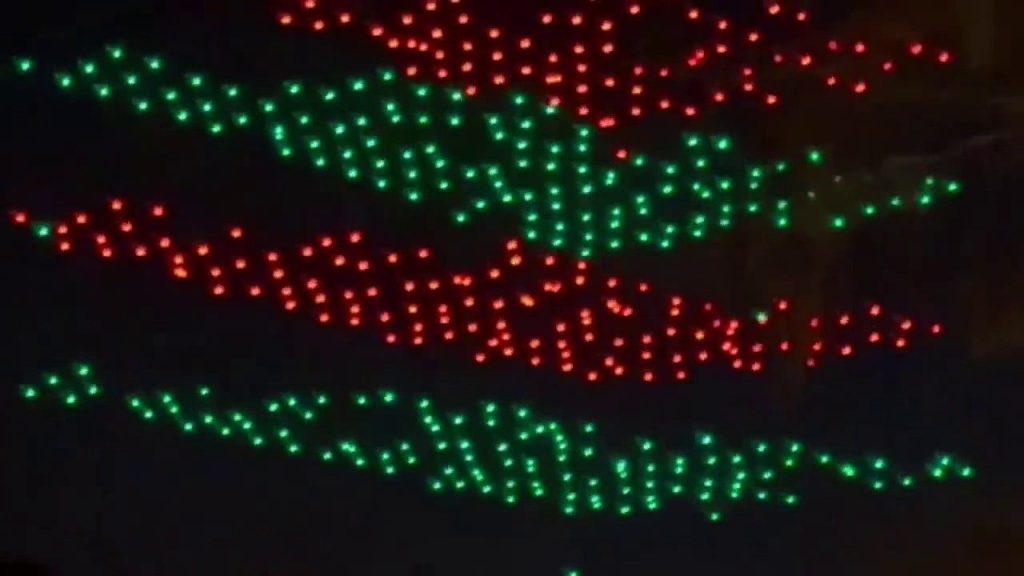A holiday drone show in Orlando, Florida, turned chaotic on Saturday, December 21st, when several drones malfunctioned and plummeted from the sky, injuring a 7-year-old boy and prompting the cancellation of a subsequent show. The incident, which occurred around 6:45 p.m. local time over Lake Eola, unfolded as hundreds of drones were maneuvering into formation for the aerial light display. Video footage captured the moment several drones began to descend haphazardly, ultimately crashing to the ground near onlookers. A bystander’s audible reaction of disbelief underscored the unexpected nature of the malfunction. The scene was further complicated by the presence of geese on the lake, who visibly reacted to the falling drones, attempting to escape the chaotic situation.
The 7-year-old boy, struck by one of the falling drones, was subsequently transported to a hospital for treatment. While the extent of his injuries hasn’t been fully disclosed, the incident prompted the City of Orlando to immediately cancel a second drone show scheduled for later that evening, citing “technical difficulties.” This precautionary measure underscores the seriousness with which the city regarded the malfunction and its potential for further incidents. The incident has raised questions about the safety protocols and regulations governing drone light shows, particularly those involving large numbers of drones operating simultaneously.
The Federal Aviation Administration (FAA) has launched an investigation into the cause of the drone malfunction. The agency confirmed that drone arrays and light shows are subject to stringent regulations, including the requirement of a waiver to operate multiple drones concurrently. The FAA’s investigation will likely focus on various aspects of the drone show’s operation, including the software controlling the drones, the safety measures implemented to maintain a safe distance between the drones and the public, contingency plans for drone failures, and protocols for managing potential airspace conflicts with other aircraft. The investigation will also scrutinize the use of geofencing technology to confine the drones within a designated area and the adequacy of the operational staff.
The drone show was operated by Sky Elements Drones, the same vendor employed by the City of Orlando for a similar event the previous year. The company has expressed its concern for the injured boy and pledged full cooperation with the FAA investigation. In a statement, Sky Elements Drones emphasized its commitment to safety, underscoring its track record of millions of viewers witnessing their shows annually without incident. The company reiterated its adherence to the highest safety standards set by the FAA and pledged to determine the root cause of the malfunction.
The incident highlights the inherent complexities and potential risks associated with large-scale drone operations, especially in public spaces. While drone light shows have become increasingly popular, this incident serves as a stark reminder of the importance of rigorous safety protocols and robust oversight. As the FAA investigation progresses, it is anticipated that the findings will provide valuable insights into the factors contributing to the malfunction and potentially inform future regulations and safety procedures for drone light shows. The incident also underscores the need for ongoing technological advancements and operational best practices to mitigate the risks associated with drone technology.
This incident is not the first time concerns have been raised regarding the safety and regulation of drones, especially within the United States. There have been previous reports of unidentified drones operating in various locations, prompting discussions about national security implications and the need for effective drone detection and identification technologies. The FAA’s investigation into the Orlando drone show malfunction will likely contribute to the broader conversation surrounding drone safety and regulation, influencing future policies and procedures aimed at ensuring the responsible and safe integration of drone technology into public life. The incident also highlights the need for continued dialogue between regulatory bodies, drone operators, and the public to address the evolving challenges and opportunities presented by the increasing prevalence of drones in various applications.

